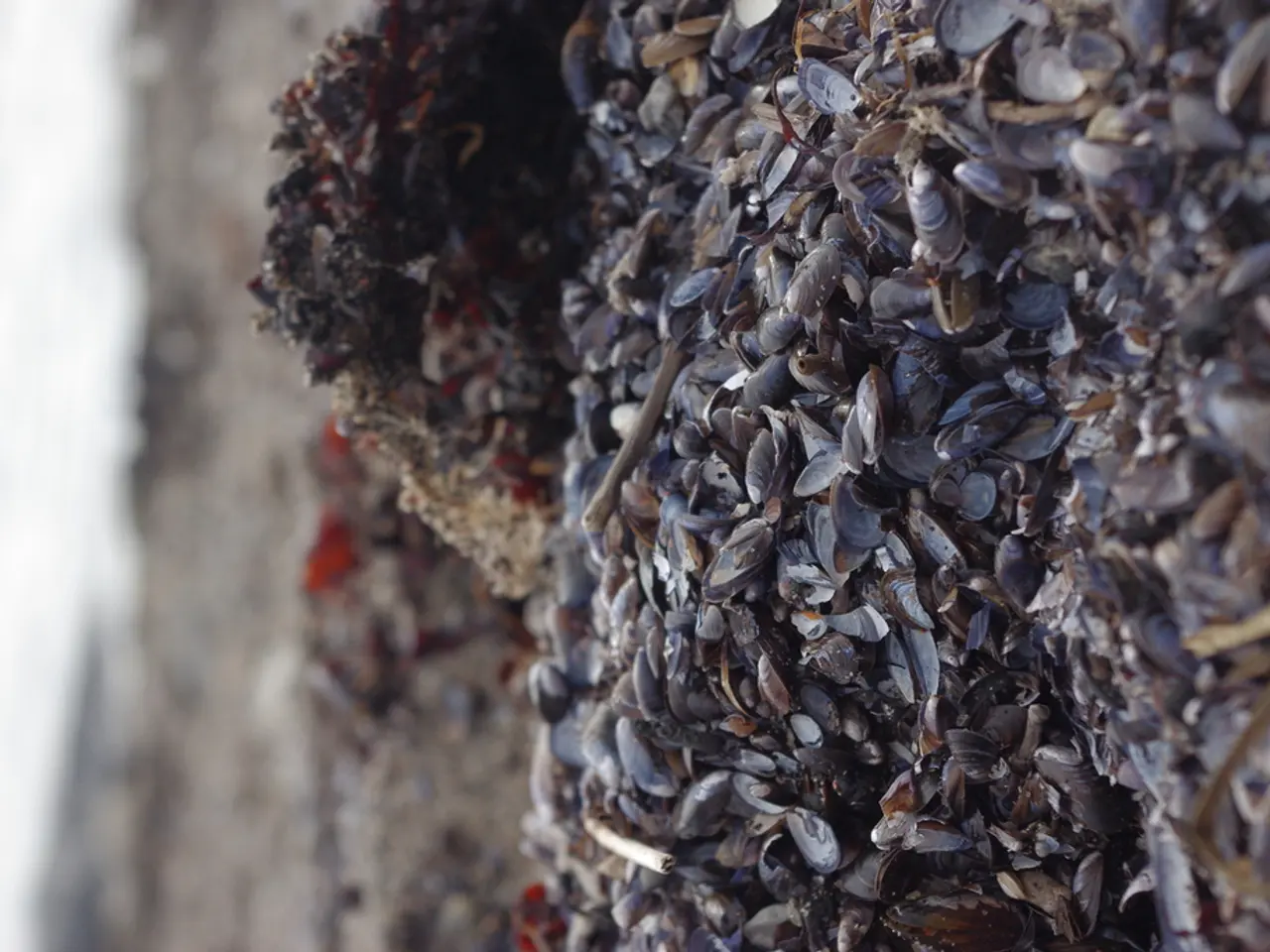Navigating the Benefits and Challenges of Cultivating Pacific Oysters in Alaska's Frigid Seas
In the face of increasing risks such as climate variability, ocean acidification, and disease outbreaks, understanding how extreme environments affect ocean food production has become crucial, especially for shellfish farms worldwide. This is particularly relevant for Alaska, where the cool coastal waters, once considered a limitation, may prove to be one of the state's greatest strengths for a more sustainable and resilient shellfish industry.
Oyster farming in Alaska is a burgeoning industry, with the state's cold, clean waters providing ideal conditions for raising high-quality shellfish. The bulk of Alaska's mariculture production consists of Pacific oysters, which thrive in these conditions, thanks to their ample fats and heart-healthy polyunsaturated fatty acids.
A 3-year study conducted by NOAA Fisheries scientists and partners at an oyster farm near Juneau, Alaska, aimed to understand how the cold, nutrient-rich waters of Southeast Alaska influence oyster growth and quality. The findings of this study suggest that Alaska's subarctic environment offers both surprising benefits and potential challenges for oyster farmers.
Modern farming techniques like intertidal tumble cages and improved farm siting through the Aquaculture Opportunity Area identification process could benefit oyster farmers in Alaska. These advancements, combined with the state's cooler waters, may provide a natural buffer against marine heatwaves which can stress oyster health. However, harmful algae called Alexandrium can cause dangerous levels of paralytic shellfish toxins, forcing farms to shut down for long periods.
Continued investment in monitoring and management tools like early warning systems for harmful algal blooms can help reduce the economic impact of farm closures. Becca Cates, a mariculture biologist at the Alaska Fisheries Science Center, stated that Alaska's Pacific oyster farms are among the northernmost in the world, and they are still learning how local and regional ocean conditions shape oyster growth and quality.
The study offers insights to expand and strengthen Alaska's oyster farming industry by understanding local ocean conditions. Research groups from the University of Alaska Southeast, the Alaska Department of Fish and Game, and local aquaculture organizations have collaborated on oyster farming studies in Southeast Alaska. This collaborative research, which also involved scientists from the Port Gamble S'Klallam Tribe, Alaska Coastal Rainforest Center, Fordham University, North Carolina State University, and University of Alaska Fairbanks, aims to help find the best places to site farms, improve farming methods, and prepare for environmental challenges.
Oyster farming in Southeast Alaska often takes 3 years or more due to shorter growing seasons. However, Alaska's cooler waters keep oysters from spawning, allowing them to stay plump and flavorful all year round. As the industry continues to grow, it is essential to strike a balance between economic growth and environmental sustainability, ensuring that Alaska's oyster farming remains a resilient and thriving industry for years to come.








